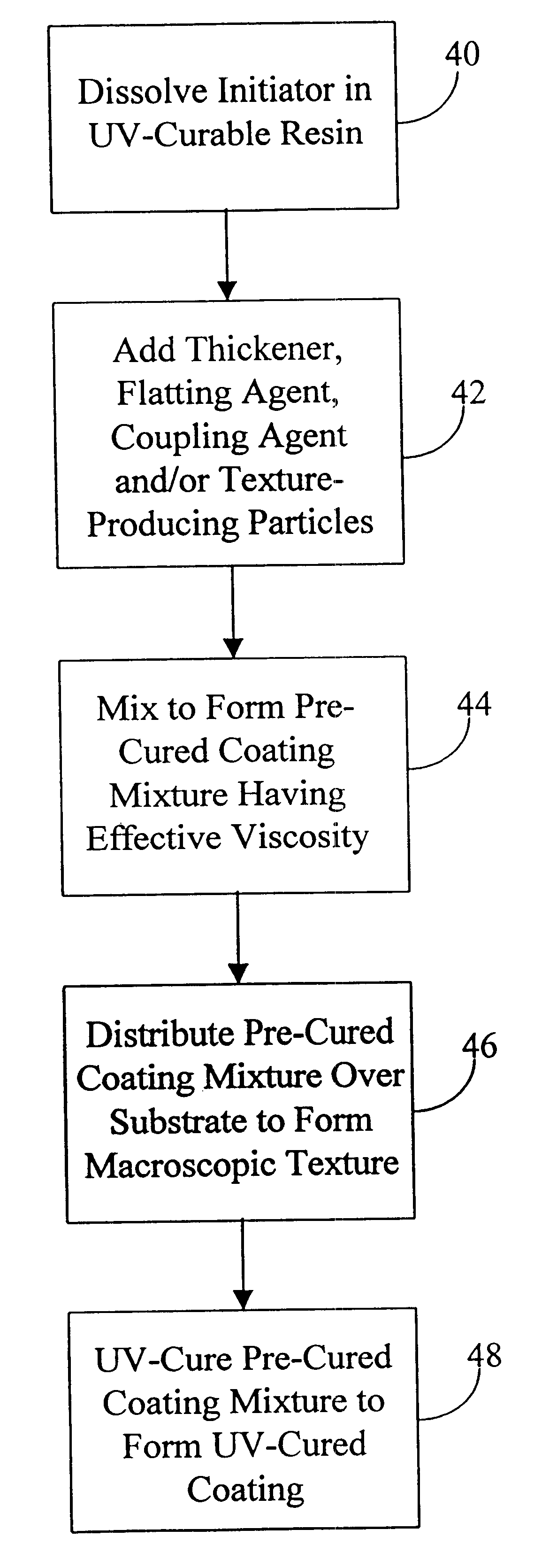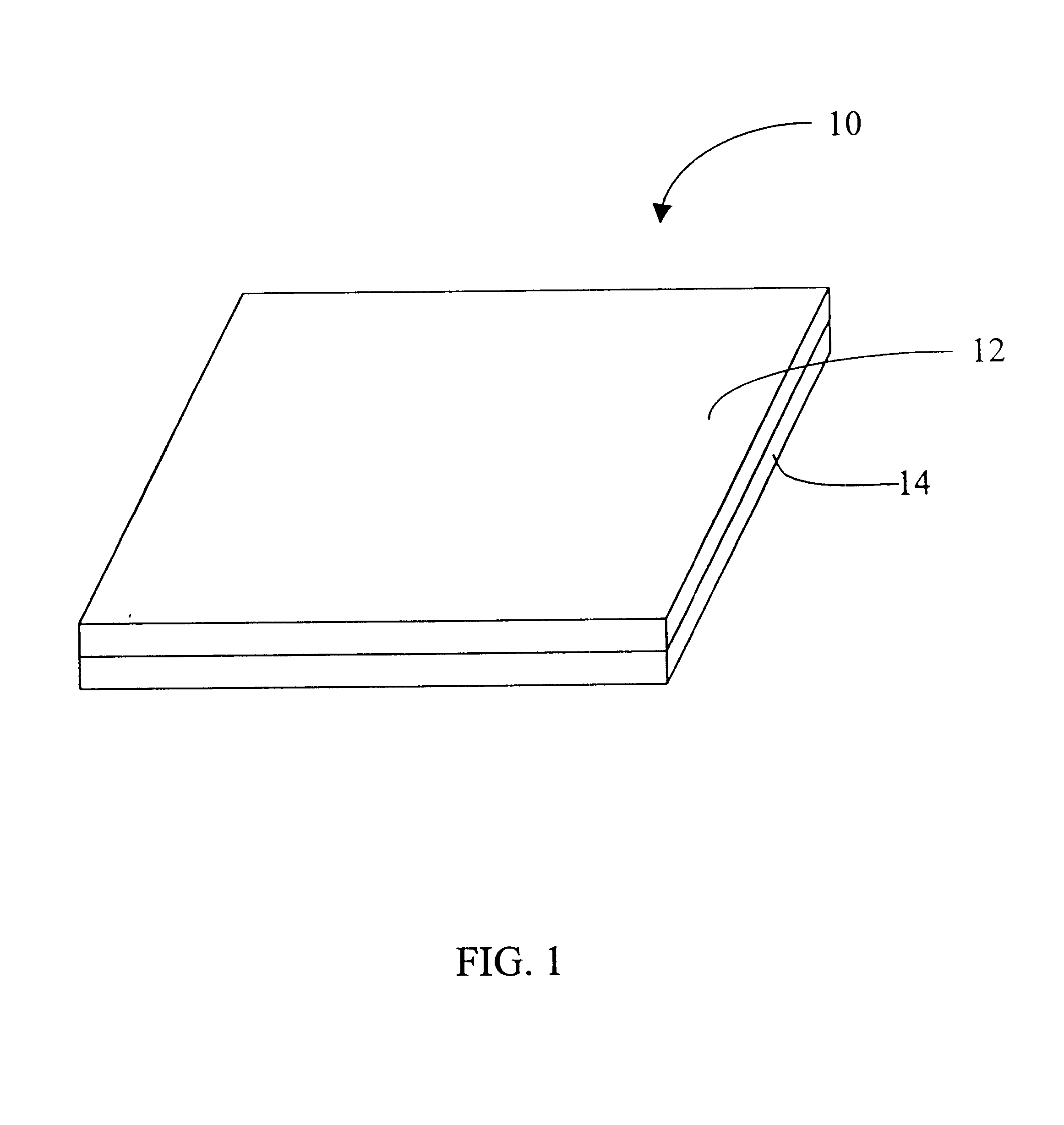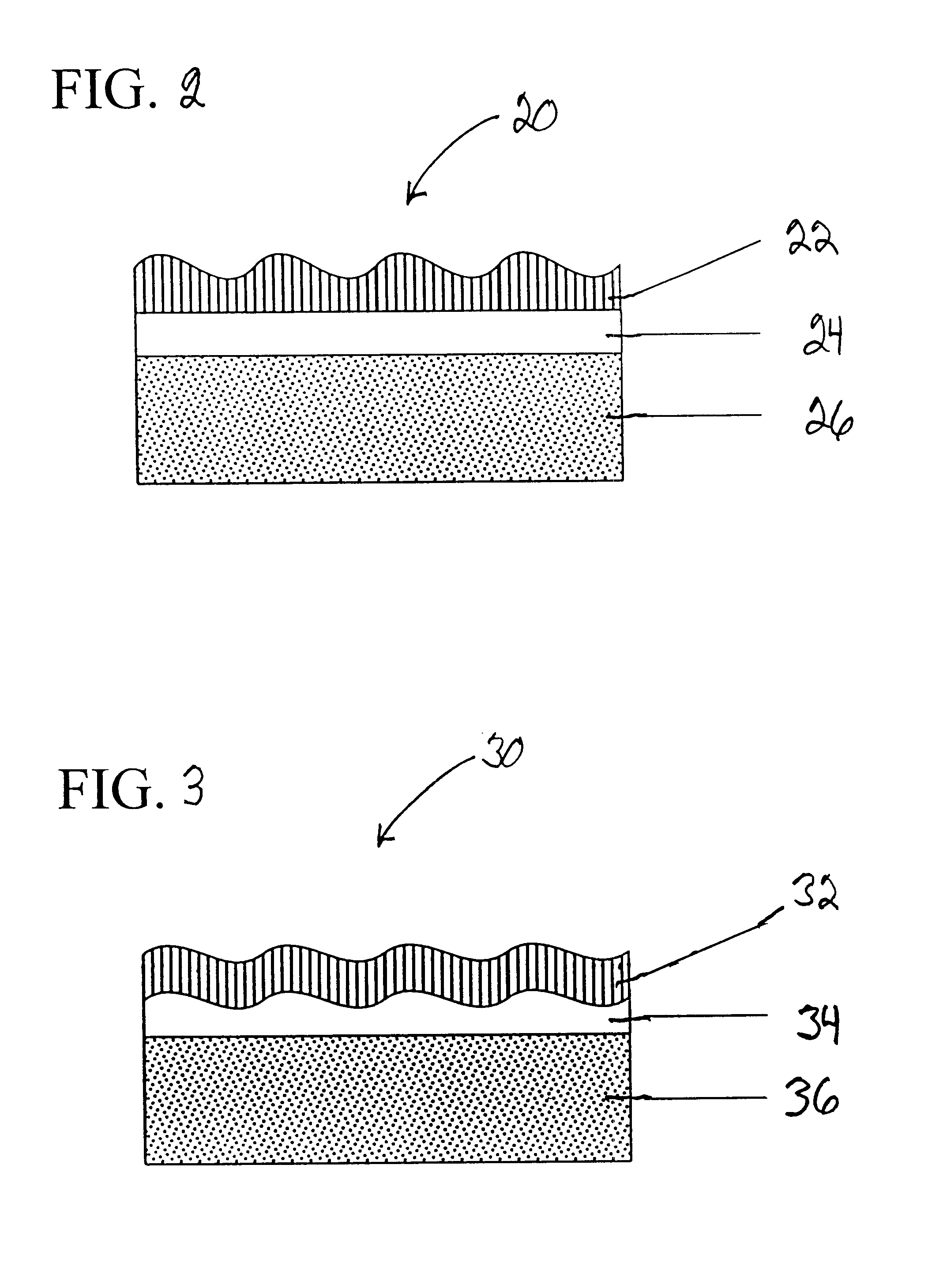Coating having macroscopic texture and process for making same
a technology of coating and macroscopic texture, which is applied in the field of radiation-curable coatings, can solve the problems of unsatisfactory high viscosity, affecting the efficacy of uv radiation, and potential separation of resins
- Summary
- Abstract
- Description
- Claims
- Application Information
AI Technical Summary
Benefits of technology
Problems solved by technology
Method used
Image
Examples
example 1
This example describes a microscopic texture with good abrasion resistance, but poor cleanability. 60 g of alumina (available as NANOTEK ALUMINA 0100 from Nanophase Technologies Corp., Burr Ridge, Ill.) having an average particle diameter range of 27-56 nm, 7.92 g of prehydrolyzed 3-methacryloxypropyltrimethoxysilane (available as Z-6030 from Dow Corning, Midland, Mich.), 240 g of a UV-curable resin (see Table 1 below for the resin composition), and about 200 g of 0.5 in. diameter porcelain balls were added to a porcelain media mill.
The mixture was ball milled for about 6 hours at room temperature. The pre-cured coating mixture, after removal of the grinding media, was applied using a 1.5 mil draw bar to rigid polyvinyl chloride floor tile substrates at room temperature. The tile substrates were then UV-cured in a two step process. First, the tile substrates were UV-cured in air using a line speed of 100 feet per minute (fpm) under two H-bulb (mercury) lamps on high. Then the tile s...
example 2
This example shows a coating with macroscopic texture having good cleanability and scratch resistance. 31.17 g of silica (available as NANOTEK SILICA 2000 from Nanophase Technologies Corp., Burr Ridge, Ill.) having an average particle diameter range of 15-33 nm, 10.51 g of prehydrolyzed 3-methacryloxypropyltrimethoxysilane (available as Z-6030 from Dow Corning, Midland, Mich.) prepared as described in Example 1, 100 g of a UV-curable resin (see Table 2 below for resin composition). The mixture was hand stirred with a wooden spatula and then mixed with an ultrasonic probe for about 20 minutes. The pre-cured coating mixture was applied to flexible polyvinyl chloride floor substrates at room temperature with a spatula and distributed on the substrate with an air knife. These sheet vinyl substrates were then UV-cured under nitrogen (<500 ppm oxygen) using two H-bulbs set on high and a line speed of 100 fpm. Two passes under the lamps were made under these conditions. The resulting coati...
example 3
To show the benefits of using nanometer-sized alumina in a coating according to the present invention, a coating was made using larger alumina particles. 60 g of alumina (available as A152-SG from Alcoa, Pittsburgh, Pa.) having an average particle diameter of 1.5 .mu.m, 0.48 g prehydrolyzed silane (Z-6030), 240 g of the resin used in Example 1, and about 200 g of 0.5 in. porcelain balls were added to a ball mill and milled as in Example 1. This pre-cured coating mixture was applied, cured, and tested for scratch resistance as given in Example 1. The resulting coating was visually not as transparent as the coating in Example 1 and was given a scratch rating of 2 indicating visual scratches were present.
PUM
| Property | Measurement | Unit |
|---|---|---|
| particle size distribution | aaaaa | aaaaa |
| particle size | aaaaa | aaaaa |
| particle size | aaaaa | aaaaa |
Abstract
Description
Claims
Application Information
 Login to View More
Login to View More - R&D
- Intellectual Property
- Life Sciences
- Materials
- Tech Scout
- Unparalleled Data Quality
- Higher Quality Content
- 60% Fewer Hallucinations
Browse by: Latest US Patents, China's latest patents, Technical Efficacy Thesaurus, Application Domain, Technology Topic, Popular Technical Reports.
© 2025 PatSnap. All rights reserved.Legal|Privacy policy|Modern Slavery Act Transparency Statement|Sitemap|About US| Contact US: help@patsnap.com



